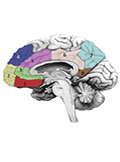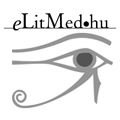The eLitMed.hu medical portal uses computer cookies for convenient operation. Detailed information can be found in the Cookie-policy.
Clinical Neuroscience - 2014;67(01-02)
Content
[Clinical studies with levodopa/carbidopa intestinal gel]
[The motor complications in advanced Parkinson’s disease may interfere with the quality of life. To overcome this disability, a jejunal levodopa pump was developed. In this review we have summarized the published clinical data with this method.]
[The role of sleep in the implicit learning processes]
[The role of sleep in different memory processes is debated. Probably it plays an active role in the memory consolidation or possibly it prevents forgetting by protecting against interference or it makes the memory performance more efficient by facilitating the forgetting. The beneficial effect of sleep in explicit memory is well demonstrated, while the role of sleep in implicit mechanisms has not been comprehensively characterized so far. There are several factors which affect the appearance of sleep effect, such as the structure, the length and the complexity of sequence being used, the awareness of the sequence, the length of the learning blocks and the offline period. Besides the classical sleep deprivation methods with healthy participants, examining patients with sleep disorders could be a new method of the investigation of the sleep effect which enables us to enrich our knowledge not only about the sleep-dependent memory consolidation but also the cognitive dysfunction related to sleep pathologies. This new line of research can help the development of more effective rehabilitation programs.]
[Relationship between default mode network and consciousness]
[Neural correlation with consciousness represents a main topic of neuroscience studies. New results of consciousness researches proved that based on a coherent function in between its components the default mode network activity is the condition for awake consciousness. The subject of consciousness is self. Tasks related with the self were proving a high default mode network activity. Using connections inside the network, results which were related with self, could be considered to represent a polymodal integration system are they are participating in fine processing of the highly integrated associative information. It could be a result of the convergence of cognitive binding. There is a strong connection between the level of consciousness and praecuneal activation. It was proved that the network activity is changing during sleeping (normal condition), trauma or under drug induced altered consciousness. The default network activity can be considered as the neural correlate of consciousness. Further researches are warranted to answer the question: is the activity of the network the cause or is just accompanying the development of human consciousness?]
[Multiple disruption of the body representation in neglect]
[Background and purpose - Neglect related to the body has many symptoms. We suggest that the various symptoms might be associated with the injuries of different cognitive functions referring to the body, which are caused by lesions of different brain areas. Therefore we investigated the injuries of two functions in a group of patients with neglect (N=10) contrary to patients without neglect (N=10) and healthy controls (N=10). These functions are: perception of body location in external space and the perception of body shape. Methods - We applied a novel method (Body Portraying Method), which is suitable for measuring subjective perception of both body location and body shape. Results - 1. Patients with left neglect perceived their bodies with a significant right shift compared to their real body position. In contrast to this, patients without neglect and healthy controls tended to shift the subjective location of their body to the left. 2. Patients with neglect perceived the shape of their bodies significantly more distorted than both patients without neglect and healthy controls. 3. In case of eight patients with neglect, the symptom of shifted body location to the right and the symptom of body shape distortion appeared together. However, injuries of these two functions dissociated in case of two neglect patients. Conclusions - Both the perception of body location in external space and the perception of body shape might become distorted in neglect. Furthermore, the dissociation of these symptoms supports our suggestion, that they might be associated with the injuries of different functions referring to the body. This result has practical issues as well. At the end of the study we discuss the necessity of appropriate tailored physiotherapy (fitted to the injured function) in the rehabilitation of patients with neglect.]
[Diagnosis of primary insomnia by actigraphy - Improved results by data selection]
[Study objectives - In spite of the useful information provided by actigraphy in sleep medicine it is still not an independent tool either in the clinical diagnosis or in the follow-up. In the frame of a retrospective study, a simple new method of data reduction was applied with the aim of improving the clinical impact of actigraphy for the diagnosis of primary insomnia. Methods - Actigraphic records with a duration of 1 week produced on 47 subjects who met the inclusion-exclusion criteria. The daily activities during the investigational period were registered by means a self-completed questionnaire. Three parameters (sleep latency, sleep fragmentation and sleep efficiency) and only their three ’worse - as regards insomnia’ daily values were analyzed statistically. The study participants comprised 13 healthy controls, 17 healthy ‘bad sleepers’ and 17 subjects with primary insomnia. Results - The post-hoc tests did not reveal statistically significant difference in the three parameters between the healthy and ‘bad sleeper’ groups, but these two groups differed statistically from the primary insomnia group. Conclusion - The actigraphic analysis of sleep latency, sleep fragmentation and sleep efficacy allows a significant differentiation between subjects with primary insomnia and healthy controls, but not between healthy controls and healthy ‘bad sleepers’. Statistical algorithms indicated ‘models’ for clinically good and bad sleepers. Further studies on large populations are necessary before this method can be introduced in the routine medical care of individuals with primary insomnia.]
[Dostoyevsky’s epilepsy in the light of recent neurobiological data]
[Background and purpose -Since the 1960s several theories have developed on the epilepsy of Fyodor Mikhailovich Dostoyevsky. Probably the most exciting and still actual question might be the subject of the „ecstatic aura”, he described in his novels based on his own experiences. During this extremely rare seizure onset the patients experience a strong sense of happiness, harmony and wholeness. The symptomatogenic zone of ecstatic seizures were considered to be of temporal lobe origin for a long time. Lately though this theory seems to be questioned based on the results of SPECT and deep brain EEG monitoring techniques in addition to the enrichment of our knowledge concerning the function of the insular cortex. Methods - Literary and scientific overview on the subject of Dostoyevsky’s epilepsy, with special concern to his ecstatic seizures. Results and conclusion - According to new electrophysiology and imaging techniques ecstatic seizures - including the seizure onset of Dostoyevsky - could rather be connected to the insular cortex.]
[Pneumococcal meningitis in a pregnant woman]
[Bacterial meningitis is a life-threatening disease. The incidence of meningitis is about 2.6-6 cases per 100.000 adults per year in developed countries. The most common causative microorganisms are Sreptococcus pneumoniae and Neisseria meningitidis. A 33-year-old multigravida, at 24 week of gestation was admitted to the hospital because of ear pain, haedache, fever and confusion. Lumbal puncture was performed and cerebrospinal fluid analysis showed signs of bacterial meningitis. Latex agglutination test was positive for S. pneumoniae, Gram-positive diplococci have seen under microscope and later cultivation verified S. pneumoniae as the causative agent. After ceftriaxon, dexamethasone administration and treatment in intensive care unit, left side mastoidectomy was performed since cranial computed tomography showed acut exacerbation of chronic mastoiditis on the left side. After extubation, mobilisation and 14 days antibiotic treatment the patient, who had residual hearing loss on the left side, was discharged from the hospital. During the treatment the foetal parameters were normal. The patient at 39 week of gestation gave birth to a healthy infant. Forty-eight case reports have been published in this topic around the world until April, 2012. The most common causative agents were S. pneumoniae and Listeria monocytogenes. Because of the little amount of data, it is hard to appreciate the actual incidence and prognosis of this life-threatening illness both for mother and infant. As far as we know this is the first published case report of meningitis during pregnancy in Hungary. By this article we would like to draw attention to the importance of teamwork, of prevention of brain abscess formation and of the removal of the infection’s focus.]
[Sleep-EEG in dizygotic twins discordant for Williams syndrome]
[Background and purpose - Reports on twin pairs concordant and discordant for Williams syndrome were published before, but no study unravelled sleep physiology in these cases yet. We aim to fill this gap by analyzing sleep records of a twin pair discordant for Williams syndrome extending our focus on presleep wakefulness and sleep spindling. Methods - We performed multiplex ligation-dependent probe amplification of the 7q11.23 region of a 17 years old dizygotic opposite-sex twin pair discordant for Williams syndrome. Polysomnography of laboratory sleep at this age was analyzed and followed-up after 1.5 years by ambulatory polysomnography. Sleep stages scoring, EEG power spectra and sleep spindle analyses were carried out. Results - The twin brother showed reduced levels of amplification for all of the probes in the 7q11.23 region indicating a typical deletion spanning at least 1.038 Mb between FKBP6 and CLIP2. The results of the twin sister showed normal copy numbers in the investigated region. Lower sleep times and efficiencies, as well as higher slow wave sleep percents of the twin brother were evident during both recordings. Roughly equal NREM, Stage 2 and REM sleep percents were found. EEG analyses revealed state and derivation- independent decreases in α power, lack of an α spectral peak in presleep wakefulness, as well as higher NREM sleep σ peak frequency in the twin brother. Faster sleep spindles with lower amplitude and shorter duration characterized the records of the twin brother. Spectra show a striking reliability and correspondence between the two situations (laboratory vs. home records). Conclusion - Alterations in sleep and specific neural oscillations including the α/σ waves are inherent aspects of Williams syndrome.]
1.
Clinical Neuroscience
[Headache registry in Szeged: Experiences regarding to migraine patients]2.
Clinical Neuroscience
[The new target population of stroke awareness campaign: Kindergarten students ]3.
Clinical Neuroscience
Is there any difference in mortality rates of atrial fibrillation detected before or after ischemic stroke?4.
Clinical Neuroscience
Factors influencing the level of stigma in Parkinson’s disease in western Turkey5.
Clinical Neuroscience
[The effects of demographic and clinical factors on the severity of poststroke aphasia]1.
2.
Clinical Oncology
[Pancreatic cancer: ESMO Clinical Practice Guideline for diagnosis, treatment and follow-up]3.
Clinical Oncology
[Pharmacovigilance landscape – Lessons from the past and opportunities for future]4.
5.













